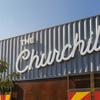A big rotation is taking place in metro Denver’s housing market this year, plunging some of last year’s hottest neighborhoods into the frigid depths while elevating overlooked mountain havens and starter-home hubs.
Take Lowry, which dropped from the metro area’s second hottest market for price appreciation a year ago to dead last, according to a ranking of 90 metro ZIP codes from the Denver Metro Association of Realtors.
“The flipping of the script is a clear demonstration of the affordability crisis that we are starting to face,” said Steve Danilyw, a member of DMAR’s market trends committee. “The properties and the areas that were very hot even last year got up to a price point where there was push back.”
In Lowry, the median price of a home sold rose 58.8 percent in the first quarter of 2018 to $675,000, only to drop 23.7 percent in the same period this year. The sales volume went from a 33 percent gain last year to an 11 percent drop this year.
But Lowry residents don’t need to put up the for-sale sign just yet.
RELATED: Property values take another leap higher across metro Denver
“It was mainly due to the new construction at Boulevard One, which raised the dollar amount and the overall number of homes sold,” explained Ann Torgerson, a broker associate with HomeSmart Cherry Creek.
Torgerson, who lives in Lowry, said there were nine new row homes ranging from $710,000 to just shy of $1.1 million sold in the first quarter last year at Boulevard One. That phase is nearly complete, and only a couple of new homes have hit the market this year.
Fewer pricier row homes helped push down the median price of a home sold 23.7 percent to $515,000. But there are other signs of slowing at Lowry. Listings took an average of 65 days to sell in the first quarter, compared to 58 days a year ago and only 21 days back in early 2017.
While it may be a special case, Lowry’s plunge wasn’t an isolated case. Hampden South and north DTC went from first to 44th after a 67 percent gain turned into a paltry 3 percent increase. Greenwood Village dropped from 6th last year, with a 28.2 percent gain, to 89th this year with an 18.3 percent decline.
Valverde, Baker and Athmar Park went from 4th to 88th after a 38 percent gain evaporated into a 12.5 percent decrease. Alamo Placita/Cheeseman Park/City Park West saw what was a 19.5 percent gain degrade into a 12.4 percent decline. That pushed the area’s ranking from 11th last year to 87th this year.
Price declines are becoming much more widespread. A year ago, an unlucky seven Denver area ZIP codes failed to register annual home price increases in the first quarter, according to the DMAR data. This year, 26 lost value in the first quarter.
In February, for the first time since 2012, the median price of a home sold in metro Denver decreased on an annual basis. The drop was small, just 2.18 percent, and gains returned in March as lower interest rates brought out more buyers.
Fifty metros now have a market momentum moving in favor of buyers over sellers, versus only five metros a year ago, according to the real estate portal Trulia. And Denver’s reversal stands out.
The shift shows up in homes spending more time on the market, more listings adjusting lower in price and more homes selling below the original asking price. And it is showing up in a wider inventory of homes to choose from, even among those once scarce homes priced in the bottom tier of the market.
“Things are getting better for buyers,” said Trulia senior economist Cheryl Young. “We are hitting a different part of the cycle. It won’t cost you if you wait it out.”
Even so, momentum moving in favor of buyers isn’t the same thing as a buyer’s market, Young cautions. While it is premature to say Denver is now a buyer’s market, the train is moving in that direction at an increasing rate of speed.
A year ago, only a quarter of metro Denver ZIP codes had momentum moving in favor of buyers. Now it is approaching 90 percent, she said.
Even with that big shift in the market, there are still neighborhoods that are heating up. A dozen metro ZIP codes are sitting on double-digit annual prices increases in the first quarter.
The Sedalia and Deckers area ranks first for price gains, up from 90th, the spot Lowry now holds, with a massive 78.1 percent increase in home prices. That gain is based on only eight sales, including a $2 million-plus home that skewed everything higher, Danilyw said.
That area may be an outlier, in more ways than one, but interest seems to be getting stronger in foothills real estate, especially if it’s priced right, said Sylvia Dorrance, a broker associate with Keller Williams Foothills in Conifer.
One possible explanation is that the easing of drought conditions may be leaving buyers less fearful of wildfires than they were in the past, Dorrance said.
Other neighborhoods where home prices are running hotter this year than last include Logan Park/Broadway Heights, up 25.2 percent; Bear Creek/Bear Valley, up 24.3 percent; Conifer up 19.2 percent and Henderson, up 18.3 percent.
Another measure of “heat” in a market is how rapidly sales are rising. In half of the metro Denver ZIP codes, sales were either down or flat in the first quarter. Half showed an increase, led by Brighton’s 80601, where sales rose 48.2 percent, from 110 in the first quarter of last year to 163 this year.
Other areas seeing a big jump in sales volumes were Montbello’s 80239, up 37 percent; Marston Slope’s 80235, up 31 percent; and Reunion’s 80022, up 30.6 percent.
Related Articles
-
Home price gains in Denver slow in February
-
Post Premium: Our best stories for the week of April 22-28
-
Property values take another leap higher across metro Denver
-
Lakewood’s long-stymied growth control measure going to voters in special July 2 election
-
Denver-metro housing market springs to life in March
What at least three of those areas share in common are new home communities targeting first-time buyers.
Nina Kuhl, broker associate HomeSmart Cherry Creek, is seeing more buyers compare existing entry-level homes against what builders are offering and recalculating. Existing starter homes have risen so much in price that they aren’t as competitive with new construction targeting first-time buyers.
“For about the same price or a little bit more, I can get a new home and pick out my finishes,” she said of a view she is hearing more young buyers express.
Although there is a lot of turbulence in the market, some long popular areas are still holding their own in price appreciation. Washington Park ranked 9th, up from 15th last year, with a 12.6 percent gain in the median price of a home sold. The West Highlands/Berkley/Sloan’s Lake area remains popular with prices up 10.4 percent after years of increases.
That said, both those areas saw a big drop in home sales this year compared to last.



